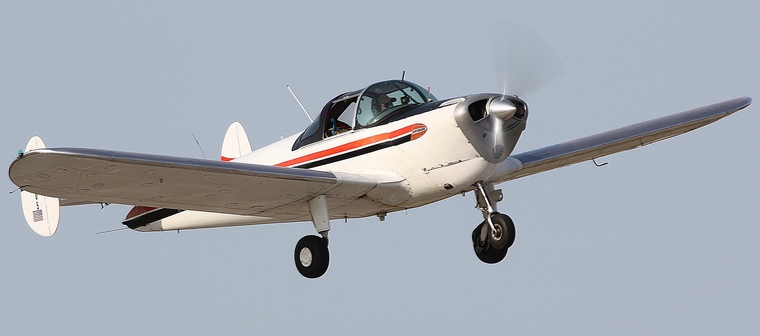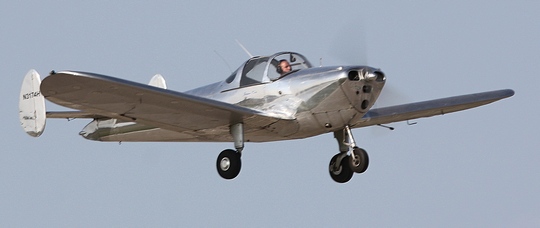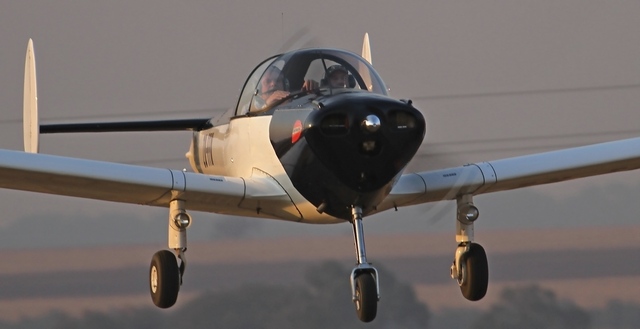FRED WEICK, AVIATION INNOVATOR AND THE ERCOUPE
By Willie Bodenstein
The Ercoupe Owners Club Website has a heading that proudly proclaims: “We fly an airplane that was at the peak of pre-World War II development. It took more than a decade and a half before the features of the Ercoupe were the norm in civil aviation. Yet the industry finally followed.”

Fred Ernest Weick a airmail pilot, aircraft designer and research engineer with NACA, the National Advisory Committee for Aeronautics, the forerunner of NAASA, was born in 1899 in Illinois in the USA. A contemporary of aviation legends Charles Lindbergh and Amelia Earhart he did not receive the same attention as his more glamorous colleagues yet his contribution to the aircraft industry is in the league of the Wright Brothers. Amongst his contributions were a textbook on propeller design, the development of a streamlined, low drag engine cowling that advanced aircraft performance drastically and was to be found in the design of most bombers and fighters that flew in the Second World War. He also introduced the “fifty foot obstacle clearance” as a concept to measure aircraft take-off performance, which today still remains as a standard of measure.

During the 1930's Fred designed an aircraft he called the W-1. It featured a high parasol wing with pusher propeller and tri cycle landing gear. In 1936 Fred left NACA and joined the Engineering and Research Corporation (ERCO) as Chief Designer to further develop the W-1into an aircraft that would be as easy and safe to fly as the average family car and the Ercoupe was born. Fred's original design changed into a two seat, low wing, all metal, tractor prop incorporating integrated controls in which the rudders were linked to the ailerons to simplify controlling of the airplane retaining the tricycle landing gear that later became the standard on most of the world's aircraft. The Ercoupe of which over 6,000 were build was so easy to fly that most students mastered it in five hours or less. Such was the impact of the Ercoupe that in 1946 he received the Fawcett Aviation Award for the greatest contribution to the scientific advancement of private flying.

The Ercoupe prototype made its first flight in 1937 and went on sale in 1940. Only 112 left the factory before the outbreak of the WWII halted the production of civilian aircraft as aluminium supplies were diverted to the production of military aircraft. ERCO then decided to manufacture Ercoupe's for military use using wood as the primary material and the type was used during the war by the Civilian Pilot Training Program and the Civil Air Patrol used them to patrol for German submarines and some 450 wooden Ercoupe's was purchased by the military. The Ercoupe also was the first U.S airplane to take off assisted by a rocket when in August 1941 a 65 Hp Continental engine powered example was converted by attaching six pressed-powder rockets to its wings turning it into a Jet Assisted Take-Off (JATO) airplane. Lt. Homer A. Boushey of the U.S. Army Air Forces ignited a blend of perchlorate, asphalt, and special oils with an instrument panel switch and the JATO Ercoupe took off with a brilliant flash and billowing smoke, cutting the aircraft's normal takeoff time and distance in half.
Production resumed after the war with ERCO manufacturing more than 4,000 aircraft in 1946 alone, turning out 34 Ercoupe's per day .However the sale of private aircraft slumped after the war and in 1947 ERCO sold the rights to the Ercoupe to the Saunders Aircraft Company which continued manufacturing until 1950 after which several other companies continued manufacturing. One of the companies that had bought the rights was Mooney who redesigned the tail to be the single Mooney-style. The new Mooney M-10 Cadet as it was called was designed to be spinable. Later models manufactured by other companies were called Aircoupe's. Production Fred Weick's innovative design only ended in 1970.
In 1948 Fred left ERCO and took up a position at the Texas A & M University where he worked on the design of the AG-1 crop duster and designed the AG-3, the predecessor to the legendary Piper PA-25 Pawnee. In 1957 he was appointed as Director and Chief Engineer at the Piper's Development Centre where together with John Thorpe and Karl Bergey they developed the Piper Cherokee, the company's most successful aircraft to date. Fred remained with Piper until his retirement in 1970 at age seventy. He however remained active in the aeronautical field assisting in design studies for Beech Aircraft and private projects in aircraft trim and control.

The Ercoupe's with its distinctive twin tail plane flies like any modern aircraft however lacking rudder pedals the Ercoupe is flown using only a control wheel which controls yaw and pitch as well as the steerable nose wheel, simplifying control both in the air and on the ground and because of its linked rudders/ailerons it is landed in a wing level crab. It seats two, is 6.32 m long and 1.8 m high with a wingspan of 9.14 m, weighs 339 kg empty with a useful load of 233 kg. Power plants differ, the model fitted with the Continental C-85-12F 85 hp has a maximum speed of 183 km/h and cruise at 178 km/h. Vne is 232 km/h and the Ercoupe has a range of 670 km whilst it will stall at a low 69 km/h.

Fred Weick passed away at age 93 in 1993. His genius touched virtually every aeronautical discipline for half a century. He arguably outstripped any of his peers in American aviation development. His career was devoted to making planes more aerodynamically efficient, safer and easier to fly, thus fostering wider use. Although he focused on small private planes, his advances were adapted to larger aircraft. His legacy and contribution to the aviation industry will remain each time we take to the skies and for as long as there are Ercoupe's, Cherokees and Agricultural aircraft flying.
|
    |























